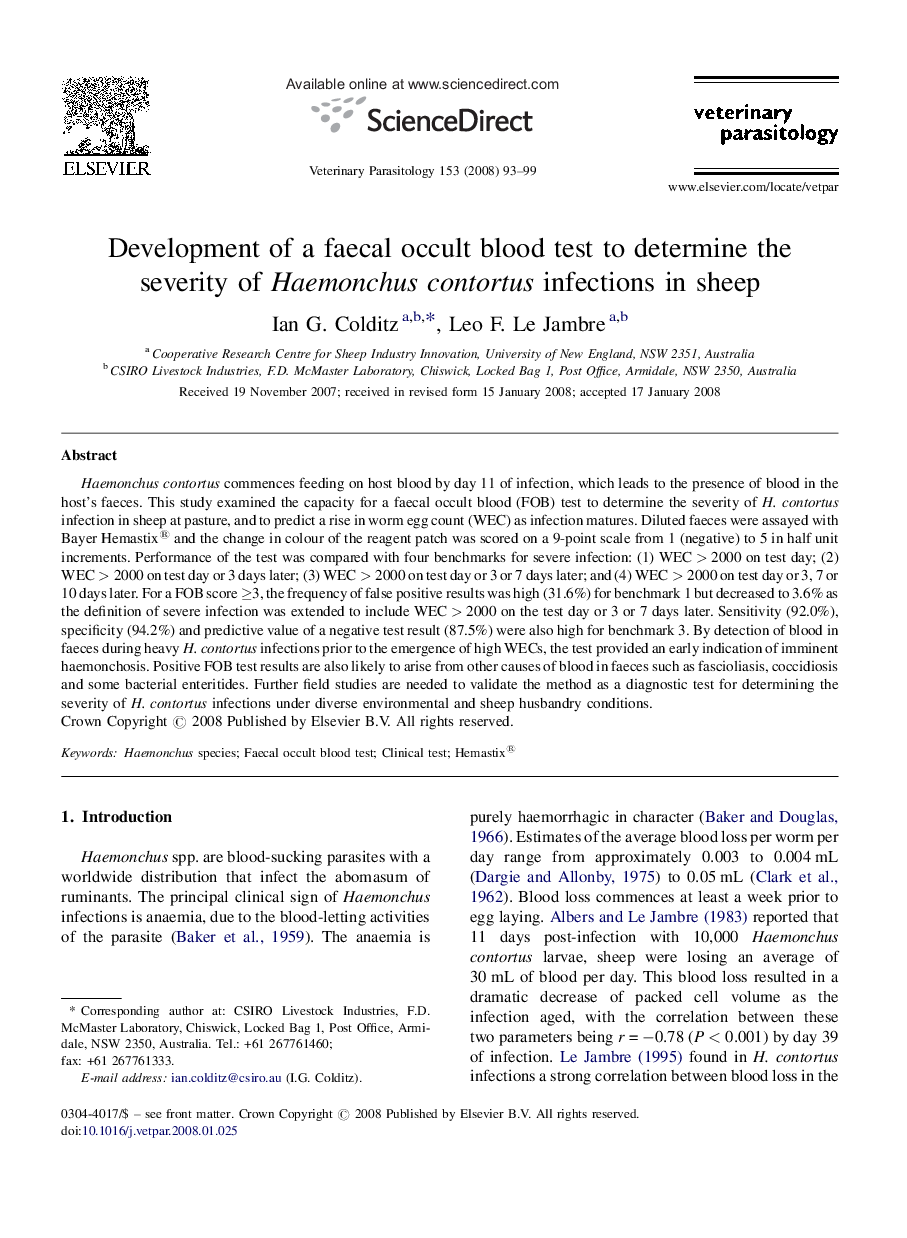| Article ID | Journal | Published Year | Pages | File Type |
|---|---|---|---|---|
| 2471610 | Veterinary Parasitology | 2008 | 7 Pages |
Haemonchus contortus commences feeding on host blood by day 11 of infection, which leads to the presence of blood in the host's faeces. This study examined the capacity for a faecal occult blood (FOB) test to determine the severity of H. contortus infection in sheep at pasture, and to predict a rise in worm egg count (WEC) as infection matures. Diluted faeces were assayed with Bayer Hemastix® and the change in colour of the reagent patch was scored on a 9-point scale from 1 (negative) to 5 in half unit increments. Performance of the test was compared with four benchmarks for severe infection: (1) WEC > 2000 on test day; (2) WEC > 2000 on test day or 3 days later; (3) WEC > 2000 on test day or 3 or 7 days later; and (4) WEC > 2000 on test day or 3, 7 or 10 days later. For a FOB score ≥3, the frequency of false positive results was high (31.6%) for benchmark 1 but decreased to 3.6% as the definition of severe infection was extended to include WEC > 2000 on the test day or 3 or 7 days later. Sensitivity (92.0%), specificity (94.2%) and predictive value of a negative test result (87.5%) were also high for benchmark 3. By detection of blood in faeces during heavy H. contortus infections prior to the emergence of high WECs, the test provided an early indication of imminent haemonchosis. Positive FOB test results are also likely to arise from other causes of blood in faeces such as fascioliasis, coccidiosis and some bacterial enteritides. Further field studies are needed to validate the method as a diagnostic test for determining the severity of H. contortus infections under diverse environmental and sheep husbandry conditions.
